Backup & Restore
View the contents of an iPhone or iPad's backup

💡iMazing 3
This guide is not yet complete or updated for iMazing 3. An update will be available soon.
iPhone and iPad backups contain almost all of your mobile data. They are an effective way to keep your information safe: if you lose your device, you can restore a recent backup and resume work quickly.
Sometimes, you may need to access data from a backup without restoring it to a device, or export data that only exists in backups, such as Messages. Because Apple’s iOS backup format is not human-readable, you need dedicated software to browse and extract this data. With iMazing, you can browse backups for free.
If you created your backups with iMazing, you can also choose from multiple snapshots of each device, unlike iTunes, which only keeps a single backup per device.
💡 Note: Since macOS 10.15 Catalina, backups are now performed through the Finder instead of iTunes. We still refer to them as iTunes backups for consistency across platform.
What content can I browse in a Backup?
If your device is not connected to your computer by USB or Wi-Fi, you'll still be able to browse its backup.
The following datasets are available when browsing a backup:
| Photos | |
| Messages | |
| Apps and App Files | |
| Contacts | |
| Notes | |
| Ringtones | |
| Voicemail and Call History | |
| Safari History and Bookmarks | |
| Calendars | |
| File System |
When browsing a backup, you can browse your device's File System - even if it's encrypted.
For more information, see:
- How to Extract files and data from an encrypted iPhone backup?
- What data is included in an iPhone or iPad backup?
- How to browse and transfer iPhone files and folder?
Here's how to view the contents of an iPhone or iPad's local backup:
- Launch iMazing on your computer
- Select the Device
- Select the Backup Snapshot
- Browse the Backup Snapshot
- Browsing iTunes backups since macOS 10.14 Mojave and above
- What to keep in mind
Before you begin
Always make sure you are running the latest iMazing version, to do so select Check for Updates from the iMazing menu, or just download the latest available version for your computer below.
Download and install iMazing on your Mac or PC computer.
Step-by-step instructions
1. Launch iMazing on your computer
If you haven’t already, download and install iMazing. For more details please refer to our guide available for PC and for Mac.
2. Select the Device
From the devices view you will see all the devices previously connected and paired to your computer. Click to select a device.
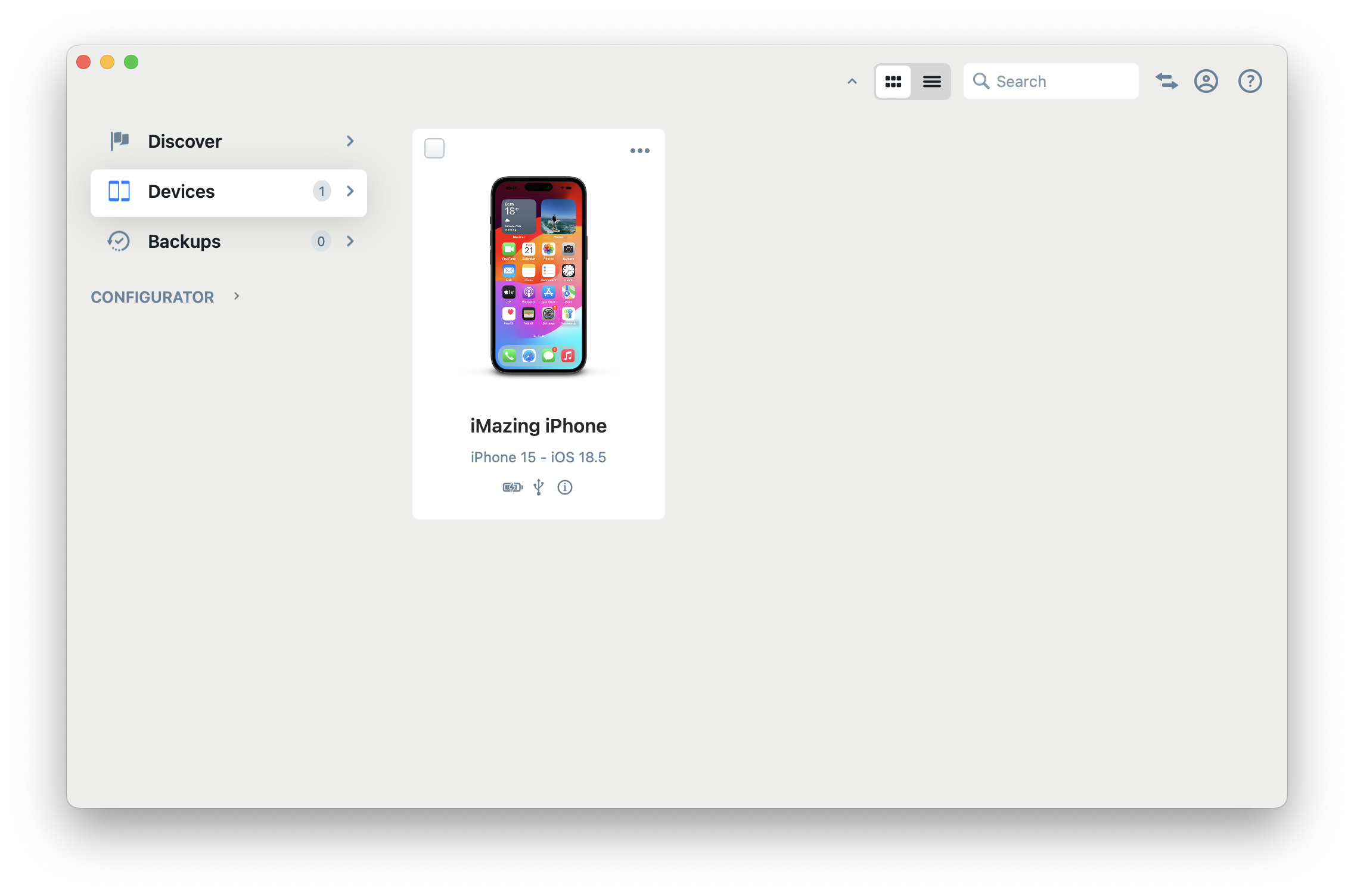
3. Select the Backup Snapshot
In the upper toolbar, click Now. This will open the Snapshot List.
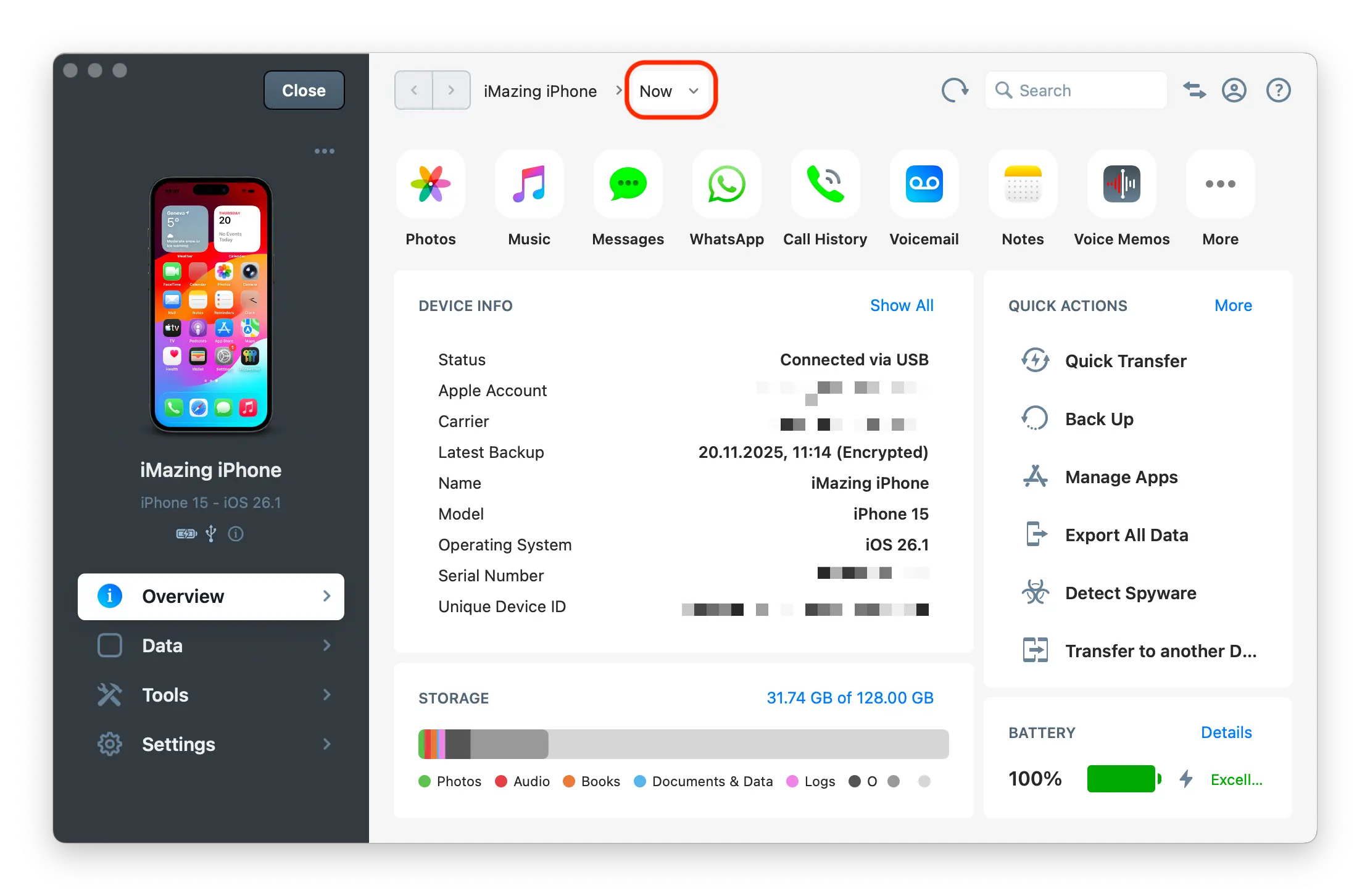
You will be presented with a list of available snapshots for that device. Select the snapshot you want to browse by clicking it.
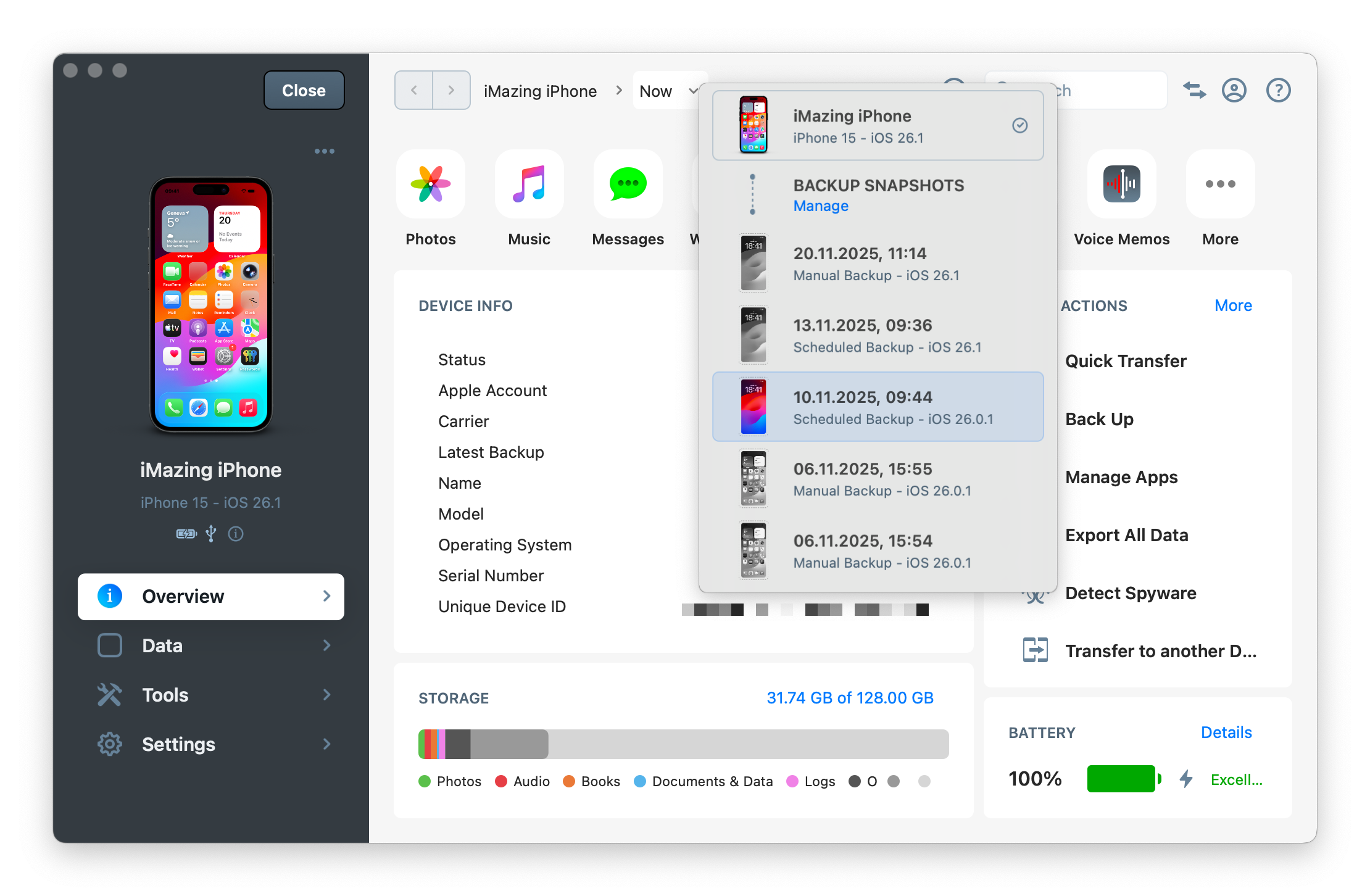
4. Browse the Backup Snapshot
You can now browse any dataset available in the backup. If you stay in the Overview section you'll have quick access to some datasets. You can also go into the Data section to access all datasets available in the backup.
- On the top trail you can see anytime which backup snapshot you are currently browsing.
- By clicking on the close icon you will switch back to the device current state.

💡Tip: You can also quickly switch to the current state by right-clicking your device in the sidebar and selecting Switch to Connected Device
5. Browsing iTunes backups since macOS 10.14 Mojave and above
Since macOS 10.14 Mojave, Apple added security controls that prevent malware and spyware from accessing your private data. You now need to explicitly authorize apps before they can access certain information, including iTunes backups.
- If you haven't authorised iMazing to access your iTunes backups yet, you will see a message to do so at the bottom of iMazing's window:
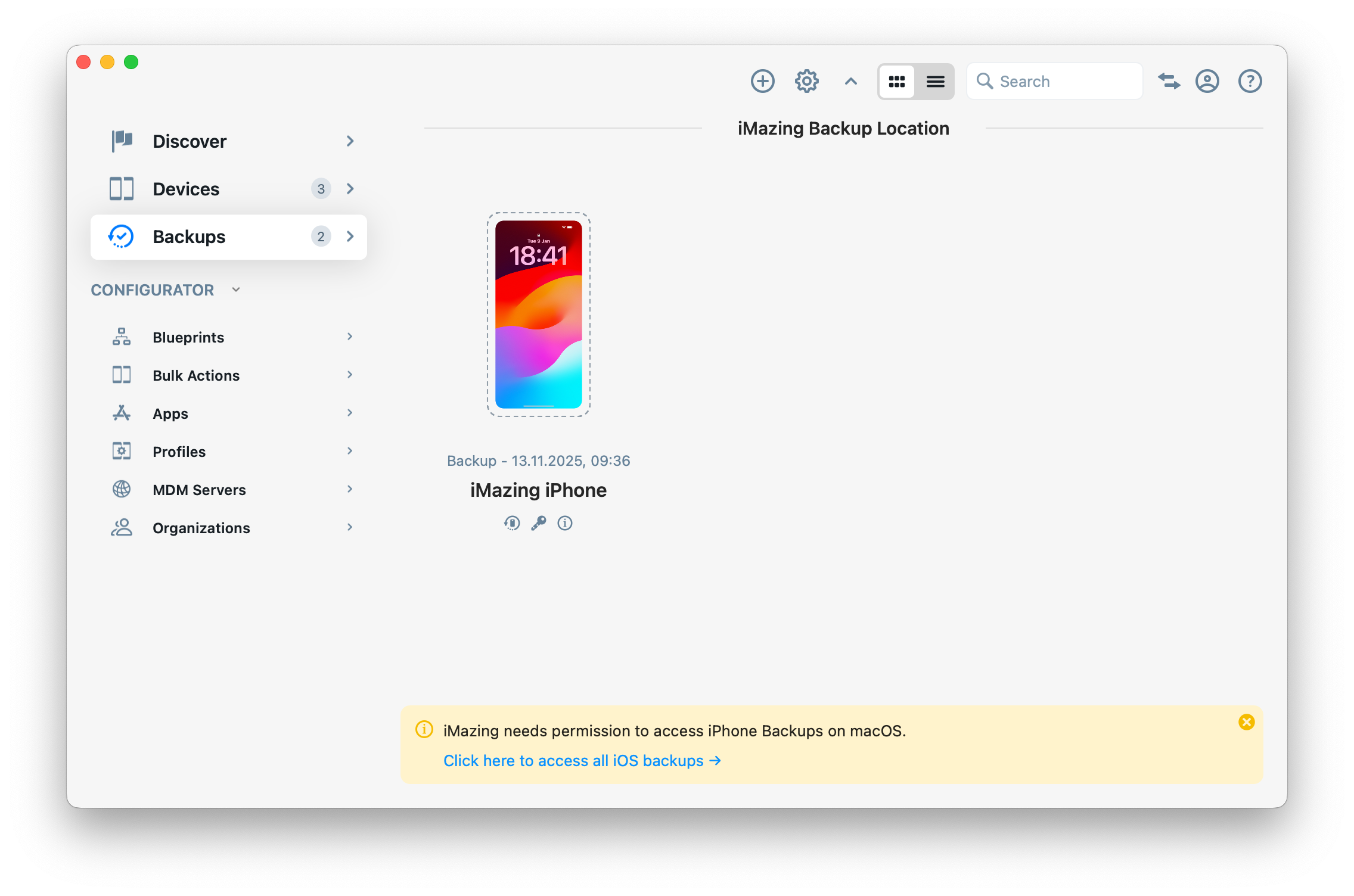
- Click the link, and iMazing will display instructions to help you add it to the list of apps which can access iTunes backups:
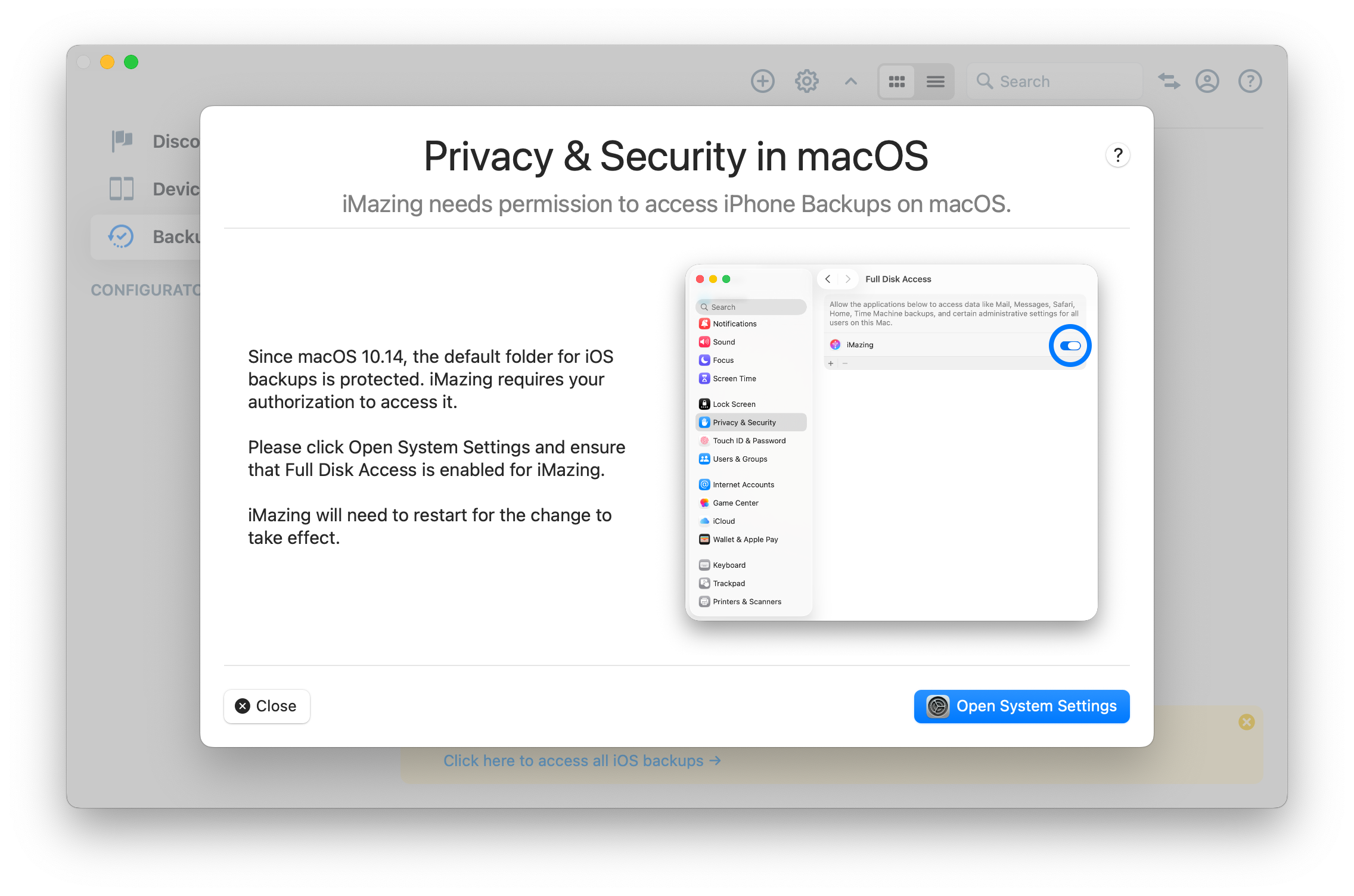
- macOS will warn you that iMazing must restart for the change to take effect, and offer to quit the app.
Once this is done, iTunes backups will appear in the Backups section under "macOS Backup location".
💡 iMazing needs to be whitelisted for Full Disk Access in order to access your iTunes backups because there is no finer grained setting available. It does not take advantage of that privilege to access any other protected data, and can work perfectly well even if you don't grant access. You can simply move or copy your iTunes backups to a location to which macOS does not restrict access to, and then open them with iMazing.
💡 Tip: You can of course rescind permissions at any time: launch the macOS System Settings app, select Security & Privacy -> Privacy tab > Full Disk Access, and remove iMazing from the list.
6. What to keep in mind
- Backup snapshot list - button indicates the date and time of backup
- You can perform multiple actions on a backup.
Learn more about Backup actions in Tools section - Storage usage - bar is full and shows how much space is being used by the backup.

